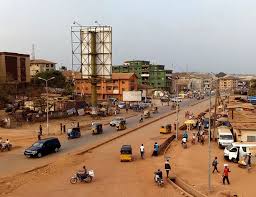By Tony Onyima, Ph.D.
According to the 2025 Pontifical Yearbook released by the Vatican’s Central Office of Church Statistics, Nigeria has emerged as Africa’s second-largest Catholic nation with 35 million adherents. This milestone signals a profound demographic and spiritual shift in global Catholicism.
With 35 million Catholics, Nigeria now accounts for more than 12% of Africa’s total Catholic population, which has grown to 281 million, representing 20% of the global Catholic community. Only the Democratic Republic of Congo ranks higher on the continent, with 55 million Catholics.
To appreciate the weight of these numbers, consider this: Nigeria alone now has more Catholics than Italy, France, and Spain individually – countries once seen as the heartlands of the faith. This is a vivid reminder that the centre of gravity for global Catholicism is shifting decisively southward.
Globally, the Catholic Church boasts 1.406 billion members. Brazil has 182 million Catholics, comprising 13% of the global population. Yet, Africa’s role as the faith’s growth engine is becoming impossible to ignore. With every passing year, one in every five Catholics in the world is African – a far cry from just a few decades ago.
While the Church in Europe grapples with secularisation and a shrinking priesthood, Africa is surging with vitality. The number of Catholic priests in Africa rose by 2.7%, bucking the global trend, which saw a modest decline of -0.2%. Today, Africa is home to 54,944 Catholic priests, forming 13.5% of the worldwide priesthood.
The growth is mirrored in the rising number of bishops on the continent. Africa’s share of the global episcopacy increased from 13.8% to 14.2%, reaching 771 bishops – men who will shape the theology, culture, and politics of the Church in decades to come.
The implications are profound for Nigeria. With 35 million Catholics – more than the entire population of Ghana – Nigeria’s Catholic Church is significant and influential. Its bishops play a growing role in Vatican diplomacy. Its seminaries are full. Its lay movements are vibrant. And its clergy are increasingly being dispatched as missionaries to ageing parishes in Europe and North America.
Nigeria’s Catholic growth is not occurring in isolation. Other African countries with rapidly expanding Catholic populations include Uganda, Tanzania, and Kenya – part of a belt of faith stretching across sub-Saharan Africa.
The Church’s global numbers tell a story of renewal and challenge. While the Americas still hold the largest regional share of Catholics at 47.8%, and Europe retains 20.4%, Africa’s 20% is set to increase in the coming years. Asia, led by the Philippines, has 93 million Catholics, and India, with 23 million, holds 11%. Oceania accounts for just 0.78%.
Regarding ecclesiastical infrastructure, the Church now has 3,041 jurisdictions – dioceses, archdioceses, eparchies, prefectures, and vicariates – showing its vast global footprint. The number of bishops worldwide has increased from 5,353 to 5,430.
However, the number of seminarians worldwide— a key predictor of future clergy— declined from 108,481 to 106,495. Again, Africa stands apart: its seminarian population rose by 1.1%, from 34,541 to 34,924, meaning the continent alone contributes one-third of all global seminarians.
The number of religious brothers and sisters – once the heartbeat of Catholic education and healthcare – has dropped globally from 599,228 to 589,423. Yet Africa again tells a different story. The continent saw an increase of 2.2% and now contributes 82,519 religious men and women, or 14% of the global total.
Permanent deacons, a growing cadre within the Church’s pastoral ministry, increased worldwide by 2.6%, from 50,150 to 51,433.
As the global Church wrestles with cultural transformation, declining vocations in the West, and calls for reform, Africa, particularly Nigeria, represents hope and challenge. The raw numbers are unambiguous. Growth is no longer happening in Rome, Paris, or New York. It’s happening in Lagos, Kinshasa, Nairobi, and Kampala.
If demographics are destiny, then Nigeria’s place at the table of Catholic influence is no longer negotiable. The Nigerian Catholic Church is not merely growing; it is ascending, evangelising, and recalibrating what it means to be Catholic in the 21st century.
In the next generation, Nigerian priests may keep churches open in Berlin or Boston as vocations dry up in Europe and America. Nigerian bishops may shape synodal processes in Rome. And Nigerian laypeople, in their tens of millions, will carry the torch of a global faith into the future.
Onyima is a Knight of the Honoured Order of the Knights of Saint Mulumba (KSM)




































